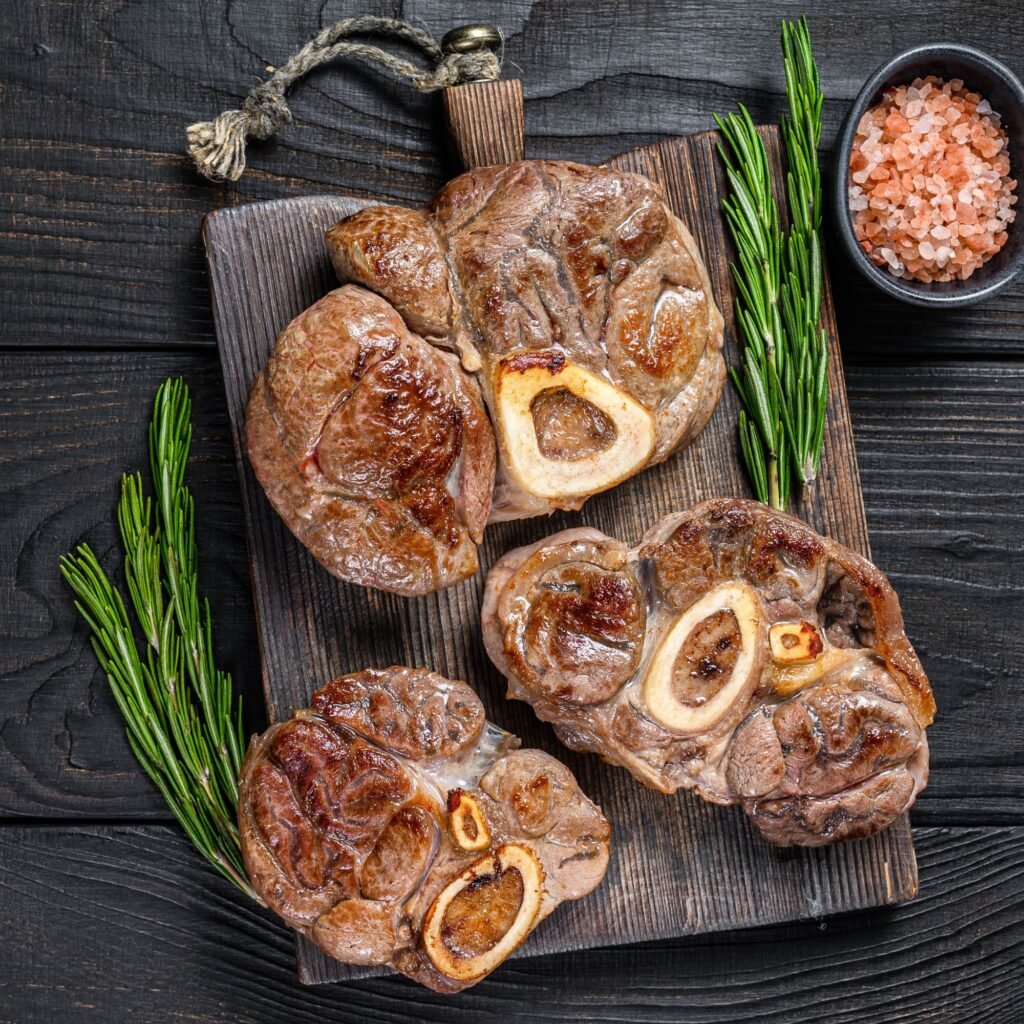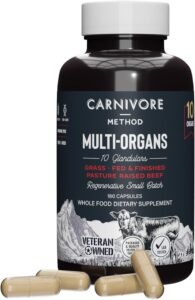
The Paleo-Carnivore diet combines principles of the Paleo diet with a focus on animal products, emphasizing meat, fish, and eggs while excluding processed foods and grains. This approach aims to promote optimal health by mimicking ancestral eating patterns, offering benefits like improved digestion and increased energy levels.
The Paleo Carnivore diet is an intriguing fusion of two popular dietary philosophies: the Paleo diet and the Carnivore diet. Both diets emphasize a return to our ancestral eating habits, but while the Paleo diet includes a variety of plant foods, the Carnivore diet is strictly animal-based. This hybrid approach, known as the Paleo Carnivore Diet, aims to capture the best of both worlds. We will explore the benefits and disadvantages of the Paleo Carnivore diet, provide suggestions for beginners, and explain why this diet is an important branch of the broader carnivore lifestyle. We will dive into the background of paleocarnivores and how this approach fits into the modern carnivore community.
What is the Paleo Carnivore Diet?
The Paleo Carnivore diet combines the principles of the Paleo diet, which focuses on foods our Paleolithic ancestors would have eaten, with the strict animal-based approach of the Carnivore diet. This means consuming a diet rich in:
- Meat (beef, pork, lamb, poultry)
- Fish and seafood
- Eggs
- Organ meats (liver, kidney, heart)
- Bone broth
- Limited amounts of Paleo-approved plant foods (non-starchy vegetables, berries, nuts, and seeds)
The goal is to mimic the dietary patterns of our ancestors, who relied heavily on animal foods but also consumed some plant matter when available.
Benefits of the Paleo Carnivore Diet
Nutrient Density
- High-Quality Protein: Animal products provide complete proteins, which are essential for muscle maintenance and overall health.
- Essential Fats: Animal fats contain essential fatty acids like omega-3s, which are crucial for brain health and reducing inflammation.
- Micronutrients: Organ meats and bone broth are rich in vitamins and minerals that support various bodily functions.
Improved Digestion
- Reduction in Anti-Nutrients: By eliminating grains and legumes, which contain anti-nutrients like lectins and phytic acid, the diet can improve nutrient absorption and reduce digestive discomfort.
- Gut Health: The inclusion of bone broth supports gut health due to its high gelatin content, which can help heal and seal the gut lining.
Weight Management
- Satiety: High protein and fat intake can help regulate appetite and reduce cravings, making it easier to maintain a healthy weight.
- Metabolic Health: The diet promotes stable blood sugar levels and can improve insulin sensitivity, which is beneficial for weight management.
Ancestral Connection
- Natural Eating Patterns: The diet encourages eating patterns that align with our evolutionary biology, which can lead to better health outcomes.
- Simplicity: The focus on whole, unprocessed foods simplifies meal planning and preparation.
Disadvantages of the Paleo Carnivore Diet
Potential Nutrient Deficiencies
- Limited Plant Foods: While the diet includes some plant foods, the restriction on starchy vegetables and grains may lead to deficiencies in certain vitamins and minerals, such as vitamin C and fiber.
- Supplementation: To avoid deficiencies, some individuals may need to supplement their diet, which can add complexity and cost.
Adaptation Period
- Keto Flu: As the body transitions to burning fat for fuel, some people may experience symptoms like fatigue, headaches, and irritability, commonly known as the keto flu.
- Digestive Adjustments: The change in diet may cause initial digestive issues as the body adapts to a higher fat and protein intake.
Social Challenges
- Eating Out: The restrictive nature of the diet can make dining out or attending social events challenging.
- Limited Variety: The exclusion of many plant foods can lead to a lack of variety in the diet, which may be monotonous for some individuals.

Background of Paleocarnivores
The concept of paleocarnivores is rooted in the dietary habits of our Paleolithic ancestors, who were primarily hunter-gatherers. These early humans relied heavily on animal foods, as hunting provided a more reliable source of calories and nutrients compared to foraging for plants. While they did consume some plant matter, it was not a significant part of their diet.
Anthropological evidence suggests that Paleolithic diets varied widely depending on geographic location and available resources. However, in many regions, animal foods were the cornerstone of the diet. This historical context supports the idea that a diet rich in animal products can be a natural and healthy way of eating for modern humans.
The Importance of the Paleo Carnivore Diet in the Carnivore Lifestyle
The Paleo Carnivore diet represents an important branch of the carnivore lifestyle because it acknowledges the potential benefits of incorporating some plant foods while maintaining a focus on animal-based nutrition. This approach offers a more flexible and potentially more balanced way of eating compared to the strict Carnivore diet.
Bridging Two Worlds
- Flexibility: The inclusion of some plant foods allows for greater dietary flexibility, which can make the diet more sustainable for some individuals.
- Nutrient Diversity: By incorporating nutrient-dense plant foods like berries and leafy greens, the diet can provide a broader spectrum of vitamins and minerals.
Addressing Criticisms
- Nutrient Deficiencies: One of the main criticisms of the strict Carnivore diet is the potential for nutrient deficiencies. The Paleo Carnivore diet addresses this concern by including small amounts of plant foods that can help fill nutritional gaps.
- Variety and Enjoyment: Including some plant foods can add variety and enjoyment to the diet, making it easier to adhere to in the long term.
Daddy’s Pick
Suggestions for Beginners
Start Gradually
- Ease Into It: Begin by gradually reducing carbohydrate intake and increasing protein and fat. This can help your body adjust to the new macronutrient ratios.
- Eliminate Processed Foods: Focus on whole, unprocessed animal products and Paleo-approved plant foods. Avoid grains, legumes, and processed foods.
Focus on Quality
- Grass-Fed and Pasture-Raised: Choose grass-fed and pasture-raised meats and eggs to ensure higher nutrient content and avoid added hormones and antibiotics.
- Wild-Caught Fish: Opt for wild-caught fish and seafood to benefit from higher levels of omega-3 fatty acids.
Incorporate Organ Meats
- Nutrient Powerhouses: Organ meats like liver and kidney are incredibly nutrient-dense and should be included regularly.
- Bone Broth: Make bone broth a staple in your diet for its gut-healing properties and high collagen content.
Stay Hydrated
- Water: Drink plenty of water to stay hydrated and support overall health.
- Electrolytes: Consider adding electrolytes to your water to help balance minerals, especially during the initial adaptation period.
Monitor Your Health
- Track Progress: Keep a journal to monitor physical, emotional, and mental changes.
- Listen to Your Body: Pay attention to how your body responds and adjust the diet as needed.
Daily Meal Plan Example
Breakfast
- Scrambled eggs cooked in butter with a side of bacon.
- A small serving of berries.
Lunch
- Grilled salmon with a side of steamed broccoli.
- A handful of nuts.
Dinner
- Grass-fed steak with sautéed spinach.
- Bone broth.
Snacks
- Hard-boiled eggs.
- Beef jerky.
Paleo Diet
- Similarities: Both diets emphasize whole, unprocessed foods and eliminate grains and legumes.
- Differences: The Paleo diet includes a wider variety of plant foods and is less restrictive.
Carnivore Diet
- Similarities: Both diets focus on animal-based nutrition and eliminate most carbohydrates.
- Differences: The Carnivore diet excludes all plant foods, while the Paleo Carnivore diet includes some non-starchy vegetables and berries.
Daddy’s Pick
Natural Approach vs. Supplementation
Natural Approach
- Whole Foods: Emphasizes obtaining nutrients from whole, unprocessed foods.
- Sustainability: A natural approach is generally more sustainable and supports long-term health.
Supplementation
- Nutrient Gaps: Supplements can help fill nutrient gaps, especially during the initial adaptation period.
- Convenience: Supplements can be a convenient way to ensure adequate nutrient intake but should not replace whole foods.
Benefits of the Paleo Carnivore Diet
Physical Health
- Improved Metabolic Health: The diet promotes stable blood sugar levels and can improve insulin sensitivity.
- Reduced Inflammation: Eliminating processed foods and carbohydrates can reduce inflammation and improve overall health.

Mental Health
- Stable Energy Levels: Consistent energy from a high-protein, high-fat diet can improve mood and cognitive function.
- Reduced Anxiety: Stabilized blood sugar levels can help reduce symptoms of anxiety and depression.
Emotional Well-Being
- Improved Self-Esteem: Achieving health goals can boost self-confidence and emotional resilience.
- Supportive Community: Connecting with others who follow the Paleo Carnivore diet can provide emotional support and encouragement.
The Paleo Carnivore diet offers a unique and flexible approach to nutrition that combines the benefits of both the Paleo and Carnivore diets. By emphasizing nutrient-dense animal products and incorporating limited amounts of Paleo-approved plant foods, this diet can provide a balanced and sustainable way of eating.
For beginners, starting gradually, focusing on quality foods, and staying hydrated are key to success. By addressing the potential nutrient deficiencies and providing practical tips for daily meals, the Paleo Carnivore diet can serve as a foundational element in achieving a balanced and healthier life.
Incorporating the Paleo Carnivore diet into your lifestyle can lead to transformative physical, mental, and emotional benefits.
Exclusive Offer
READ MORE


